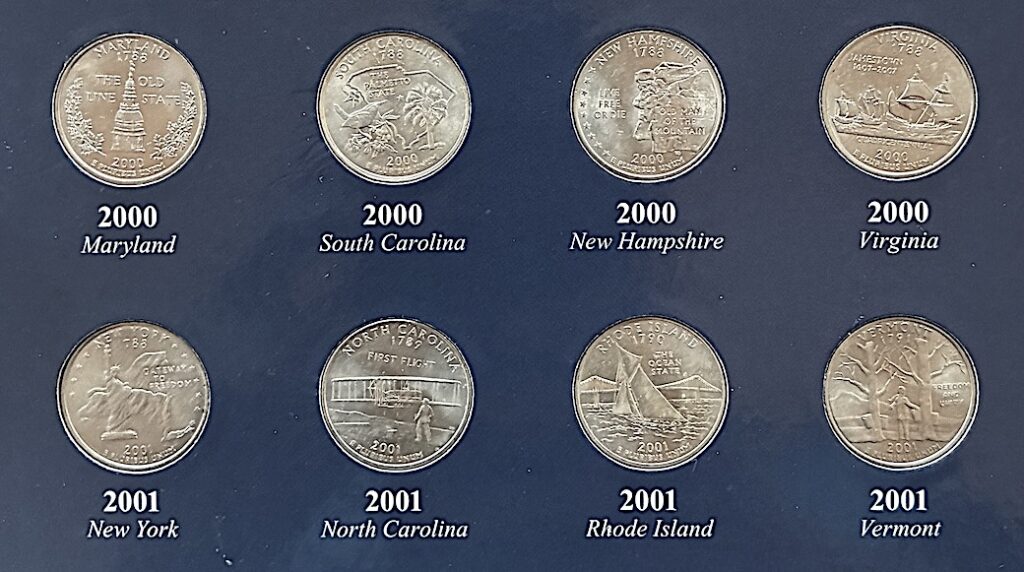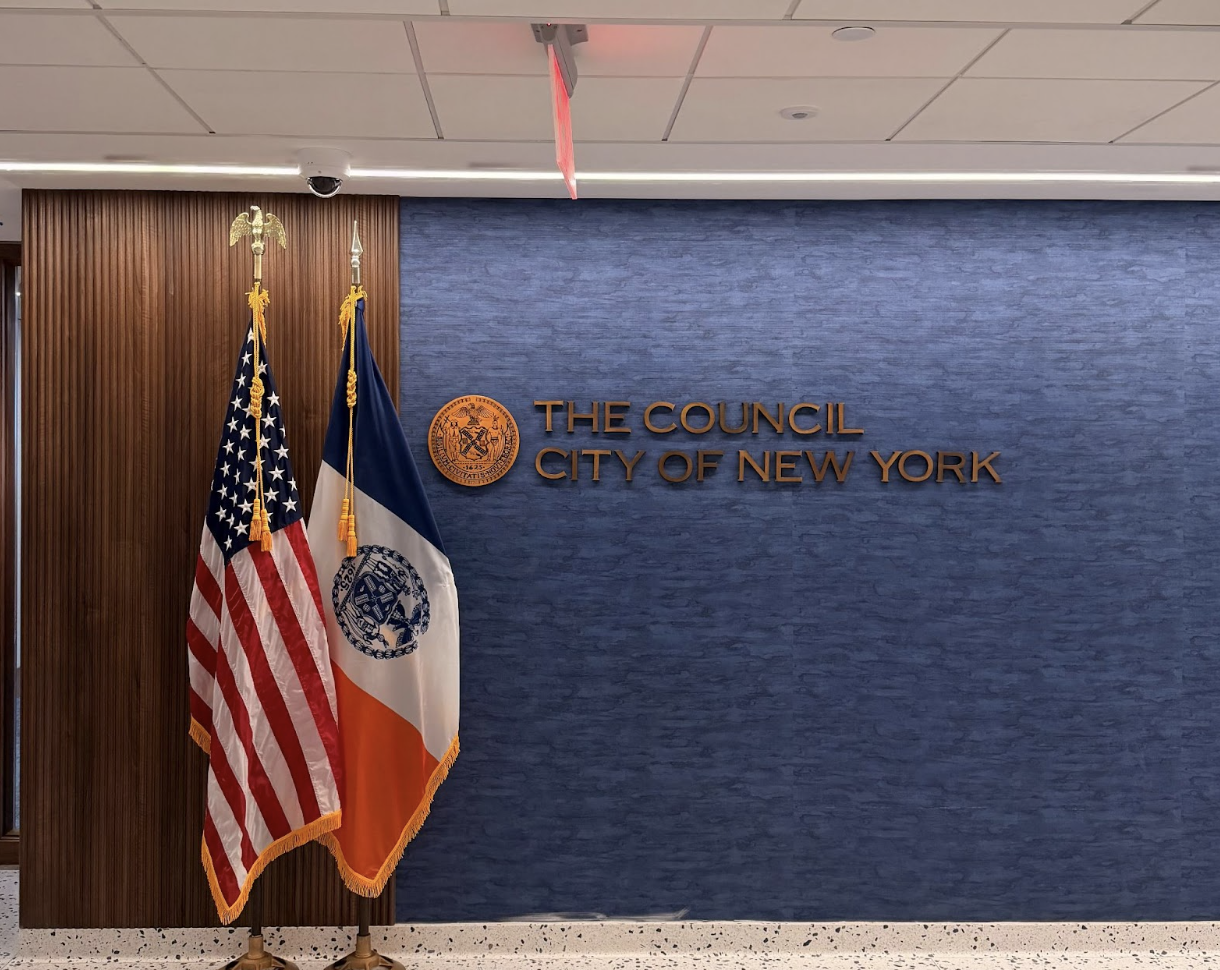(NEW HYDE PARK, N.Y.) — Just a typical day at my local 7/11. I walk under the bright green, white, and red logo and into the familiar convenience store.
I head to the coffee bar for my favorite drink, a French vanilla latte. With the hot coffee in one hand, my other hand extracts a $5 bill from my wallet. It’s more than the $2.50 the coffee costs, but enough for what I am after. The cashier gives me the change. Walking to my car, I feel the cold, familiar metal disk. A quarter, marked with George Washington’s face.
Could this be the one?
Could this fill the Texas-sized hole in my collector’s book?
I flip the coin over. And there I see the ingrained image of the Texas state outline, a star at its center. I place it in my pocket, satisfied, eager to place it in my collection.
My unusual interest in quarters began at my parents’ house on Long Island as we were playing a family game of Pokeno —a sort of combination of poker and bingo. To begin, each player gets a board covered with card symbols. The dealer holds a deck of cards and flips them over one at a time. If a player has that card on their board, they place a chip over it. The first player to get five in a row yells, “Pokeno!” to win.
Over the years, my family has added a few variations: Four Corners for covering all the corners; Poker for the same suit; and Center, played until someone (finally) covers all the card symbols.
At some point, we decided to raise the stakes, betting quarters for each of the four categories.
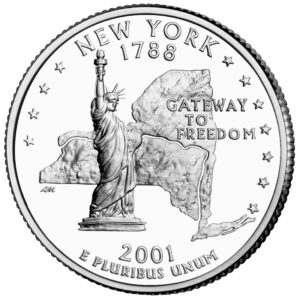
The state quarter of New York, where the author lives [Credit: U.S. Mint]
My mother noticed my curiosity that day. Later, she gave me a pamphlet on state quarters, and from that moment on, I was determined to collect each and every one of the coins.
Side note: I’m a completionist in everything I do. Chalk it up to a childhood video game addiction. Playing endless PlayStation games, I lit up whenever I earned a trophy. It bothered me when I saw something — anything — as incomplete. And so it was with my quarter collection.
The collection, known as the 50 State Quarters Program, is a series of commemorative quarters produced by the U.S. Mint from 1999 to 2008. The idea came from our northern neighbor, Canada. After recovering from an economic recession in 1992, the Royal Canadian Mint began producing commemorative Canadian quarters to celebrate the 125th anniversary of the Commonwealth’s founding. The program was so successful, it inspired the U.S. Treasury in 1997 to ask Congress to pass a bill creating a similar program for the U.S. In 2009, Congress added six more quarters, one for Washington, D.C., and five for the U.S. Territories, bringing the total set of state quarters to 56.
It would have been easy to go to a site like eBay or Amazon and order all the coins I needed. But that wouldn’t satisfy me. Part of the journey is not getting to the end but the road it takes to get there.
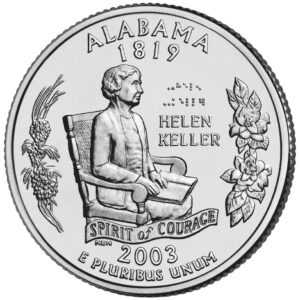
An Alabama quarter featuring Helen Keller [Credit: U.S. Mint]
My proudest moment was one Pokeno game when I looked over my winnings and saw that I had Puerto Rico, never expecting to get a territory coin so quickly. “I got the Commonwealth!” I screamed.
What was really interesting was seeing exactly how each quarter differed from the others. Each state’s quarter highlighted unique parts of each of its history, often something familiar to residents of that state, but not widely known outside of it.
Take the quarter from Alabama. On the obverse is Helen Keller, one of the state’s most famous residents. To the left is the state tree, the Longleaf pine, and to the right, two Magnolia blossoms. Keller’s name is printed both in text and in braille, a tribute to her work on behalf of the deaf and the blind.
The Hawaii state coin depicts King Kamehameha I, beloved ruler of the Kingdom of Hawaii before its admission to the US.
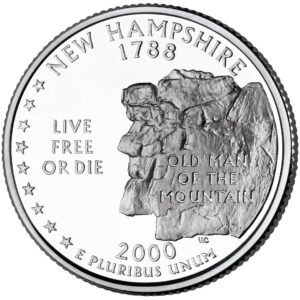
The New Hampshire quarter features the state’s “Old Man of the Mountain” rock formation, a series of five granite cliff ledges, resembling a human face. A symbol to the native Abenaki, it became a cultural icon for the state. By the time the coin was minted in 2000, the rock formation was beginning to crack due to weather and erosion. Only three years after the coin was released, the formation collapsed, leaving the coin as its legacy.
I’ve come a long way since that fateful Pokeno game last year. As of this writing, I have collected 50 out of the 56 quarters in the series.
Turns out, this is an exciting time to be a coin collector. Next year will mark the 250th anniversary of the Declaration of Independence. To mark the milestone, Congress has ordered the U.S Mint to produce another series of commemorative coins in 2026, including up to five new quarters. Already, I’ve signed up for U.S. Mint updates. The journey is never over.
